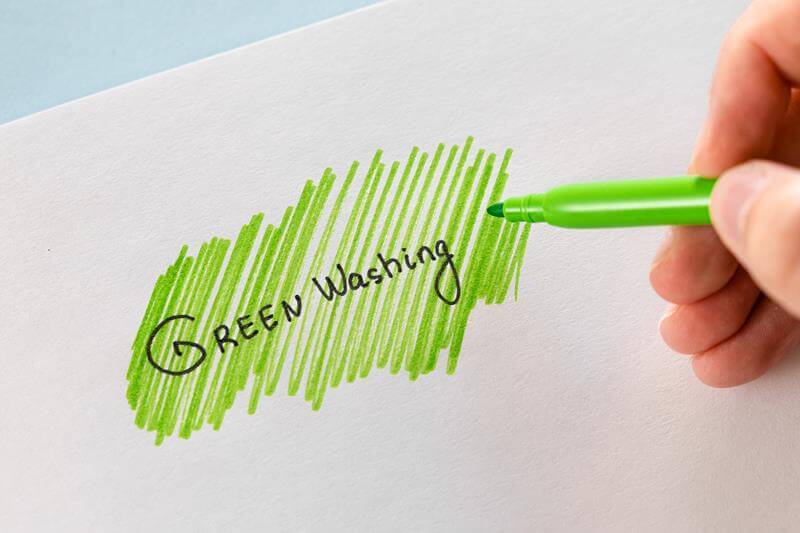Sustainable consumption is now a core philosophy for brands and their environmentally conscious supporters. However, some companies falsely claim to be eco-friendly, which harms their reputation and misleads consumers. Greenwashing—what is it? Let’s learn more about it.
What’s Greenwashing All About?
How to Spot Greenwashing
Identifying and eliminating sources of greenwashing is crucial for sustainable development.
Here are some signs that help identify greenwashing:
- Verify Certifications: Ensure claims of environmental responsibility are backed by official certifications, which can be checked on certifying organizations’ official websites.
- Beware of Vague Labels: Terms like “eco-friendly” or “natural” may sound green but don’t guarantee sustainability or safety.
- Look for Hidden Trade-offs: Manufacturers may highlight one environmentally friendly feature while concealing other harmful practices.
- Assess Consistency: Truly eco-conscious brands maintain consistent actions and provide transparent, verifiable information about their sustainability efforts.
- Scrutinize Advertising: Misleading visuals like grass, leaves, or flowers can be red flags for greenwashing, as they don’t reflect the true environmental impact.
- Examine the Company’s Philosophy: Brands genuinely committed to the environment often engage in eco-friendly events and share their outcomes transparently on official platforms.
Being an informed consumer is the best way to avoid greenwashing and support companies that truly care about the environment. This means not only trusting advertising promises, but also understanding more deeply what is behind the words of brands.
The Story Behind the Term
Greenwashing was first coined in 1986 by American environmental activist Jay Westerveld. He published an ironic article about the “save the towel” movement in hotels, which encouraged customers to reuse towels instead of taking them to the laundry, thus “saving” the environment. In fact, the goal pursued by hotels was to reduce laundry costs. Thus, the problem of making profits was highlighted, rather than caring for the environment, as “green camouflage”.
Why Greenwashing is a Problem

Top Greenwashing Examples
Greenwashing is a clever marketing tactic where brands fake eco-friendliness to lure conscious shoppers. Usually, greenwashing examples include using the words “eco”, “bio”, and “natural” on products, or using a leaf in the logo, emphasizing the color green, but the product is not environmentally friendly.
A glimpse into how some companies trumpet their green initiatives while staying silent about their less sustainable practices:
- Apple’s 2023 campaign highlighted its environmental efforts while ignoring labor and ecological concerns, drawing criticism.
- Coca-Cola touted its PlantBottle as eco-friendly, but production still uses significant resources and doesn’t reduce its carbon footprint.
- Nestlé claimed sustainable water harvesting, yet it profits by taking water from areas facing shortages.
- Volkswagen’s “eco-friendly” diesel cars were exposed for using software to cheat emissions tests.
- McDonald’s promoted recycled packaging, but continued heavy use of single-use plastics undermined their claims.
These cases show how companies advertise sustainability while hiding the unsustainable side of their operations.
How to Avoid Greenwashing
Researching the brand’s philosophy, product details, and verified certifications helps avoid unpleasant surprises.
Conclusions
Conscious choices and ethical brands are key to sustainability. Verify claims, as a green leaf on a label doesn’t guarantee eco-friendliness—it’s often a marketing ploy like greenwashing. Stay mindful and research manufacturers to ensure your choices are genuinely sustainable.
FAQ
Is Greenwashing illegal?
Brand promotion through false presentation, “greenwashing,” is often prohibited by law and does not comply with genuine quality certificates that regulate consumer protection and advertising.
Greenwashing vs. Green Marketing: How Do They Differ?
Greenwashing involves misleading consumers by falsely portraying products, services, or practices as environmentally friendly. In contrast, green marketing focuses on promoting genuine products and services designed to reduce ecological impact.

Author

Anna Smirnova
Content writer on https://rythmoftheworld.com From my practicing in science, I brought the skills of discovering, analyzing, and explanation. I adore art, photography, traveling, hiking, and winter.



